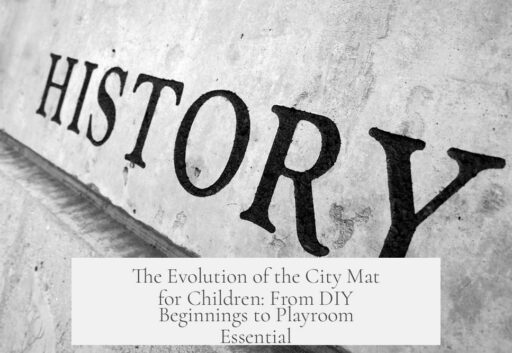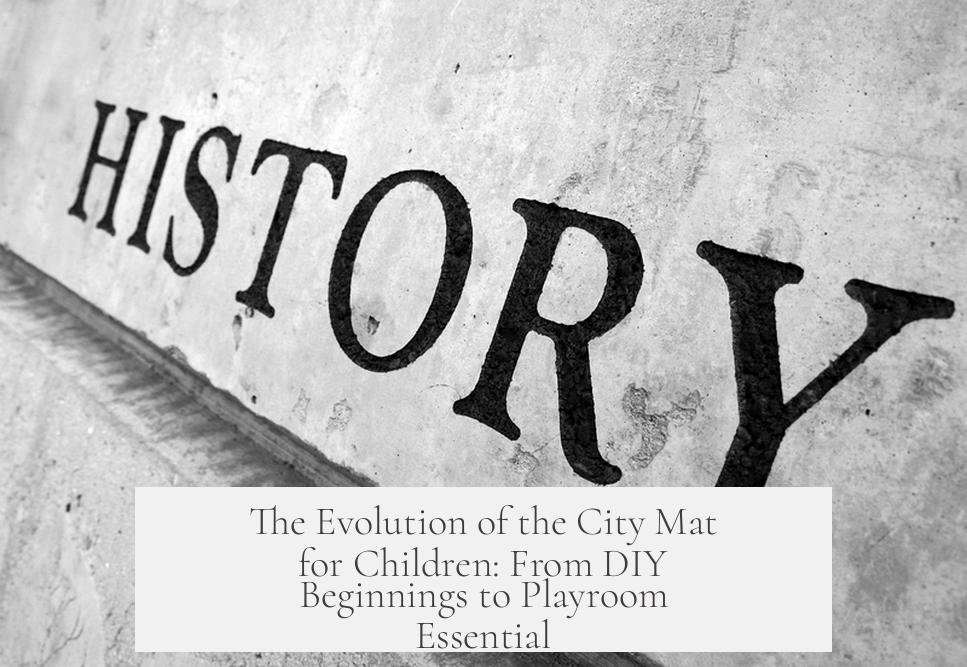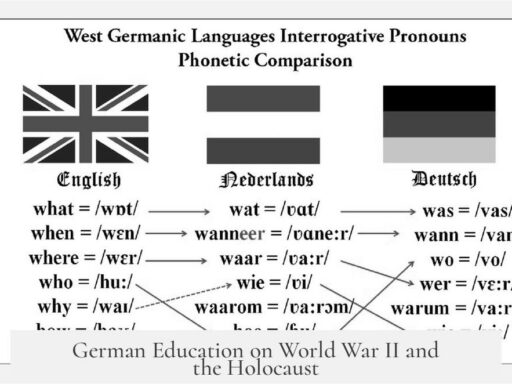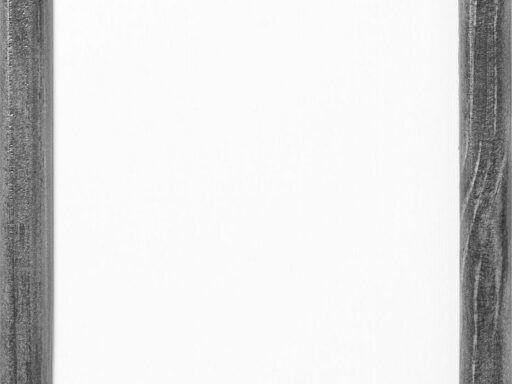The history behind the ubiquitous city mat for children begins in the early 1950s as a do-it-yourself project and evolves into a popular commercial toy by the 1960s. The earliest known example appears in a 1951 issue of Ladies Home Journal, where readers could order a felt play rug kit depicting a village layout. This kit came with pre-cut felt pieces and instructions, highlighting the mat’s initial role as a handcrafted toy designed to stimulate imaginative, pretend play.

By 1960, the concept expanded with more detailed guidance in the book Children’s Rooms and Play-yards. This source describes a hand-made city mat made entirely of felt and other fabrics such as burlap or calico. The design included railroad tracks, a lake, roads, and various city elements like houses, stores, and farms. It recommended sewing pieces to a base fabric and making the mat practical for multiple children, suggesting placing it on a low table or a bed. The mat could be folded and stored easily, making it a practical addition to a child’s play environment.
Commercial versions followed and brought the city mat concept into retail stores. In 1959, the FAO Schwarz Christmas catalogue featured a play mat that came with blocks, combining the map with physical building toys. This design allowed children to interact more fully by placing blocks representing buildings on the mat’s roads and open spaces.

Later, in 1967, Playskool introduced its Playskool Village. This product had a city mat similar to earlier versions, with roads and designated areas combined with block-shaped buildings. This format refined the previous designs by integrating structured play areas with movable pieces for construction and arrangement.
The transition from mats combined with blocks to mats presented alone as map-only products marked a significant shift. It seems home crafters continued making detailed mats by hand, while commercial products began focusing on simpler map designs without accompanying blocks. The exact timing of this transition requires further research.

- Originates from DIY felt village mats in the early 1950s.
- Spread through handmade felt rugs detailed in 1960 publications.
- Commercialized by FAO Schwarz (1959) and Playskool (1967) with blocks.
- Transitioned to map-only products later, with the timeline unclear.
- Designed to enhance pretend play and spatial awareness.
What is the History Behind the Ubiquitous City Mat for Children?
If you’ve ever seen a colorful city mat spread on the living room floor, brimming with tiny roads, buildings, and parks, you might wonder—where did this playful icon come from? The story behind the ubiquitous city mat for children is as charming as the mat itself. It weaves together early DIY creativity, vintage craftsmanship, and clever commercial innovation, creating a fabric—quite literally—that has entertained kids for generations.

Let’s pull back the curtain and explore the fascinating history of these playful urban landscapes that invite kids to drive toy cars, dream of city adventures, and even calm restless minds.
The Humble Beginnings: DIY Roots in the 1950s

Believe it or not, the city mat didn’t start out as a fancy, store-bought item. Instead, it sprouted right from the hands of loving parents and imaginative crafters.
The Ladies Home Journal—a staple household magazine back in the day—published a fun feature on November 5, 1951. It wasn’t a glossy ad but an instructional guide on how to make a “felt play rug of a village” as a Christmas present for kids. What’s even cooler is the kit offered wasn’t just paper instructions—you could mail away to get the felt pieces and detailed guidance to create your own city scape at home. Imagine the thrill of crafting a miniature village piece by piece!
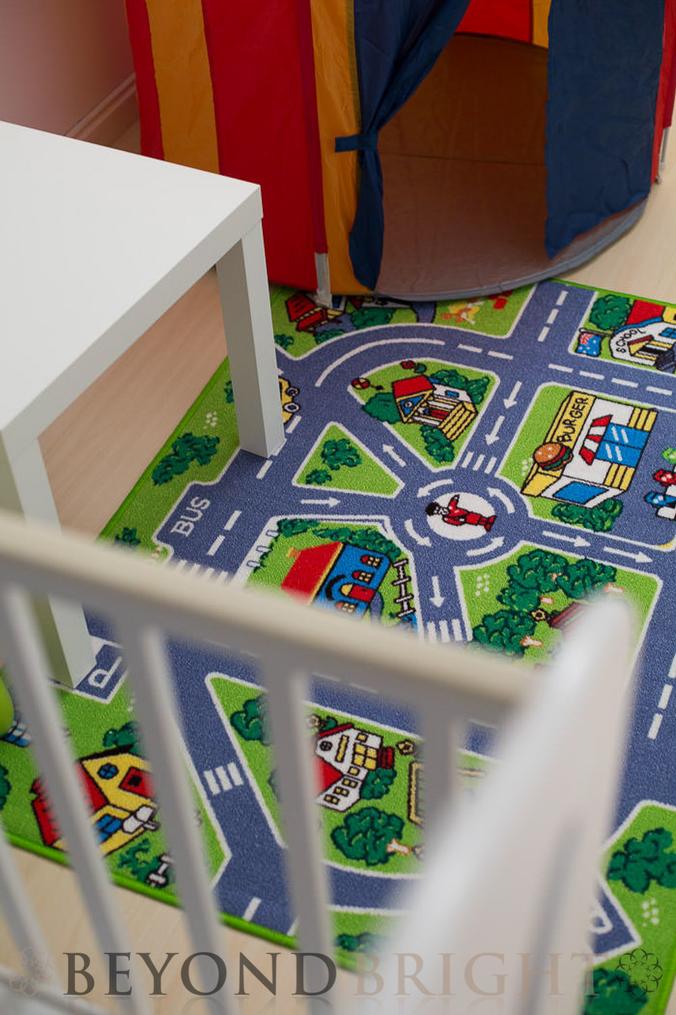
DIY city mats weren’t just short-lived holiday projects. By 1960, Children’s Rooms and Play-yards, a popular Lane Book Company publication, featured a whole chapter dedicated to homemade play rugs.
“A play rug makes this sort of pretend game all the more realistic. All the shapes on this rug were cut from colored felt, but you might use other materials such as burlap, calico, or oilcloth. The railroad tracks, the lake, and the roads can be sewn to the base piece with a sewing machine… When a number of children are playing on the rug, placing it on a low table will keep feet out of faces.”
The book gave practical tips—suggesting quirky fabric options like burlap and calico, showing parents how to sew and applique various city elements, even how to bind the rug with cloth tape. The magic here? This city wasn’t just designed for kids’ playrooms; it could become a “modernized Land of counterpane” to cheer up a sick child, wrapped around their bed like a cozy tapestry of imagination.
Commercializing the Fun: From Boutique Craft to Toy Store Shelf
As nostalgia grew for these play mats, manufacturers eventually caught on to their charm and commercial potential.
FAO Schwarz, the legendary toy store known for its fancy and sometimes extravagant toys, featured a play rug with accompanying city blocks in their 1959 Christmas catalogue. Kids could now get a ready-made urban playground where soft mats met small building blocks. Sounds like a dream come true for any child fascinated by bustling towns and make-believe traffic jams.
Fast forward to 1967 and we see Playskool releasing Playskool Village, which also appeared in FAO Schwarz’s Christmas catalogue that year. This kit streamlined the concept—a mat printed with roads and four square spaces paired with building-shaped blocks. The simplicity of this setup revolutionized playtime by combining ease of use with imaginative play: kids placed buildings where they wanted, creating changing landscapes.
So, When Did the City Mats Become Just Maps?
One interesting twist in the history is this: the transition from city mats bundled with blocks to simple printed map mats is still a bit of a mystery. While the early DIY versions and commercial sets included tangible 3D elements like blocks or different fabric textures, many modern city mats come without any extra blocks, focusing purely on the printed city layout.
This progression research is ongoing. Perhaps manufacturers found that kids preferred the flexibility of using their own toy cars with a permanent city base, avoiding the clutter and storage issues that came with block sets. Or it might be a cost-saving move to sell mats alone.
Why Do City Mats Work So Well? The Magical Benefits
Aside from their nostalgic appeal, city mats offer practical benefits that explain their lasting popularity.
- Encourage creativity: Kids invent stories, design routes, and create traffic jams or rescue missions on these mats. The open-ended nature fuels imagination.
- Help develop spatial skills: Recognizing roads, buildings, and landmarks lays basic groundwork for later geography, map reading, and planning skills.
- Calm and engage: As noted decades ago, stretching a city mat over a sick child’s bed provides comforting distraction. It still works wonders in therapeutic play environments.
- Social play booster: When several children gather, city mats offer a shared platform encouraging cooperative storytelling and turn-taking.
Insights from Personal Experience and Advice for Parents
Having grown up with a city mat myself, I testify: those colorful roads sparked endless adventures—from high-speed chases to peaceful market days. As a parent, I noticed how folding the mat away after play was one less hassle than complicated toy sets.
If you’re considering a city mat for your child, here are some tips:
- Choose a mat with vivid but not overly busy prints to avoid overwhelming sensory input.
- Pair with a small set of cars to kickstart play without clutter.
- Discuss the elements with your child; talk about roads, parks, or buildings to deepen their engagement.
- Consider mats made from durable, easy-clean materials, since these get plenty of action.
Conclusion: The City Mat’s Enduring Legacy
The city mat for children is more than just a floor covering. It’s a multigenerational artifact born out of mid-century creativity and lovingly nurtured by toy makers who understood the power of play. From DIY felt villages in the ’50s to sleek, commercial mats appearing in elite catalogs, these city play rugs blend practicality with imagination.
So next time you step on a city mat, remember it’s not just a toy—it’s part of a storied legacy. It reflects a beautiful tradition of parents and creators coming together to craft spaces where childhood thinking, creativity, and joy can roam free. That’s pretty impressive for a mat, isn’t it?
What was the earliest known version of the city mat for children?
The earliest documented version appeared in a 1951 Ladies Home Journal article. It offered a do-it-yourself felt play rug kit shaped like a village for children’s Christmas gifts.
How did homemade city mats differ from commercial versions in the 1960s?
Homemade mats were hand-crafted from felt or other fabrics, detailed with sewn roads and features. Commercial versions, such as those from FAO Schwarz, included mats with blocks for buildings and roads.
What materials were recommended for making homemade city play rugs in the 1960s?
Felt was popular, but creators also used burlap, calico, or oilcloth. Roads, lakes, and railroads were sewn onto a base fabric, with smaller pieces hand-appliqued for detail.
When did commercial city mats start being sold without blocks?
This shift is unclear and needs more research. Early commercial sets combined mats with building blocks; later versions focused on just the map or mat itself.
What features made city mats engaging for children in early designs?
They included elements like houses, stores, farms, railroads, and roads for pretend play. Some mats were designed to fold for easy storage and could be used on tables or beds.
